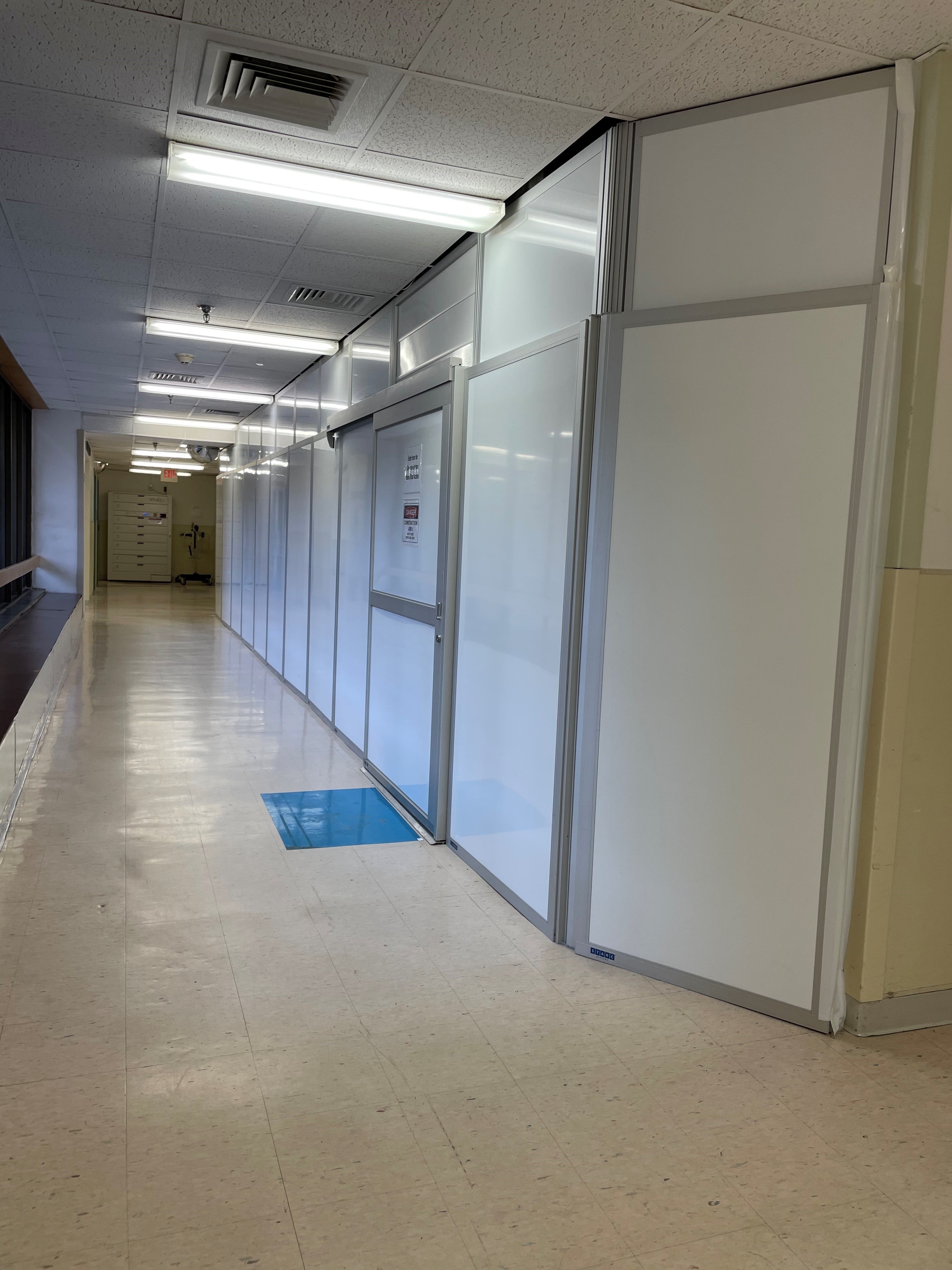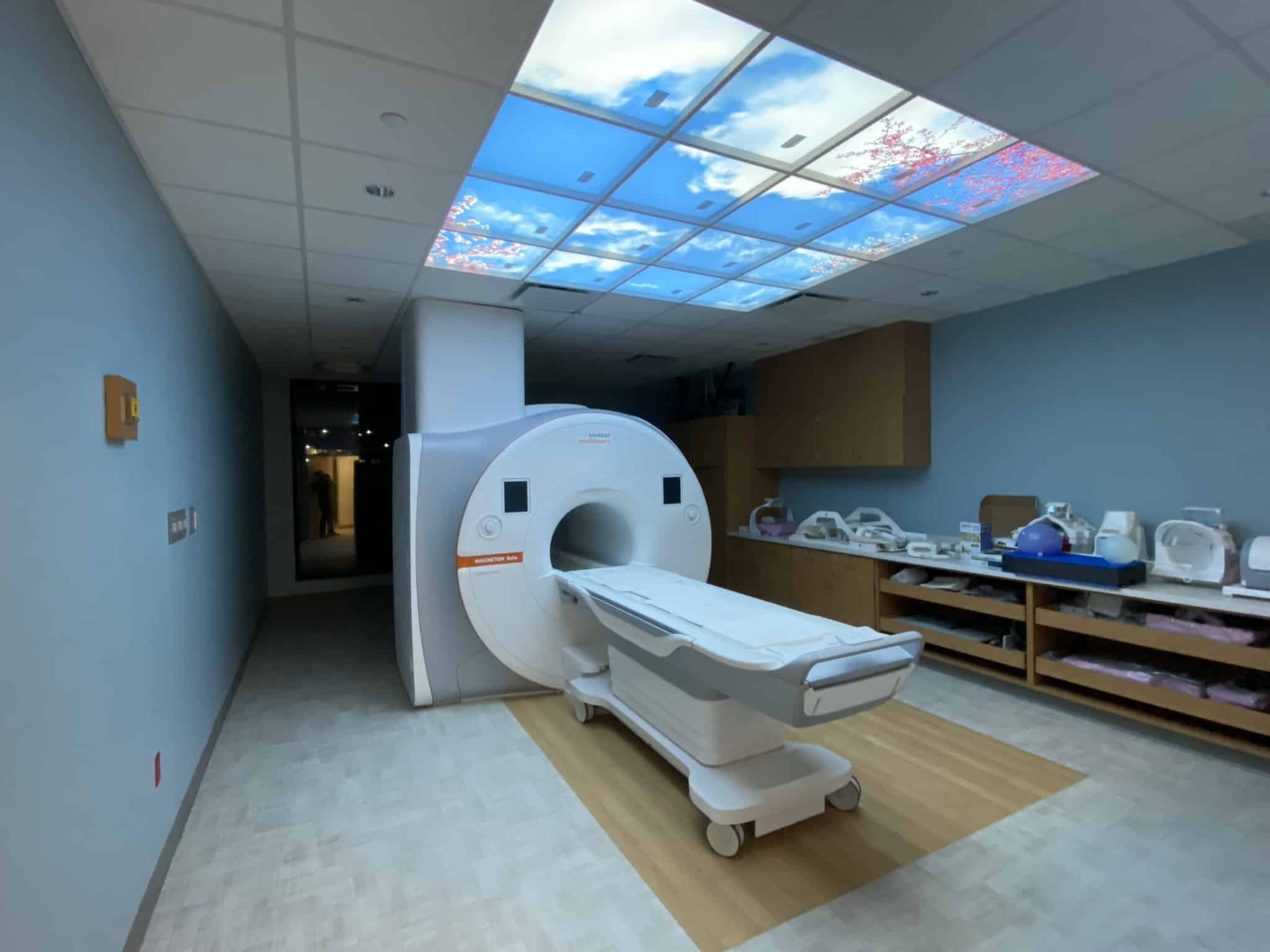Healthcare construction is a distinct and complex sub-sector of the construction industry. The planning that goes into any construction project is critical to its success, but with healthcare renovations, the project plan must be clear and well thought out due to the nature of the work. In a hospital renovation, work is taking place near patients and must be done with extreme care so as to not impact those receiving medical treatment.
Qualified healthcare construction managers (CMs) understand these concerns and are able to plan their projects to minimize impacts to adjacent spaces. Knowing the steps involved to complete a healthcare construction project are required for any contractor wanting to work on a healthcare project. When the project takes place adjacent to a cancer care facility, the concern becomes even more critical due to the immunocompromised patient population.
Planning for every project is important, however, in healthcare renovation scenarios, extra planning must take place. To keep construction activities separate from hospital functions, a temporary, hard barricade, like a STARC paneling system, is constructed to contain the construction site, and special negative air machines are used to make sure the air from the construction site does not make it into the hospital. The CM should interface as early and as often as possible with the infection prevention team and the clinical staff to reduce or eliminate undue impact on ongoing clinical operations. Ultimately, the CM wants to ensure no additional risk is being added to the clinical staff, visitors, and most importantly, patients. Construction dust and debris can cause mild to severe irritations, infections, and in extreme cases, death, so infection control becomes the most important part of the healthcare construction process. The CM along with the infection prevention team play a critical piece of the healthcare construction puzzle.

The process that dictates infection risk pre-planning is known as the Infection Control Risk Assessment (ICRA) as outlined by the FGI standards that govern a wide variety of topics in healthcare environments. The ICRA process was developed and implemented for construction related activities to help identify impacts on air and water quality and to minimize or eliminate associated risk to patients, visitors, and clinical staff. Firsthand knowledge of the ICRA planning and implementation process is imperative; the best CM for the project will have deep experience, knowledge, and care.
An effective construction infection control plan does not just include the basics of installing a barricade and some negative air machines. An additional item to consider is the placement of the ante room for entrance to the construction site. There might be a location that enables efficient entry into the construction site, but if the location is too close to where patients travel, this will present a risk when construction crews need to enter. In compliance with ICRA standards, CM teams must ask and be able to answer questions such as:
• Where can you place the ante room entrance to eliminate impacts to patients, staff, and visitors?
• What is the path of travel for crews to get into the site–not just on the floor being renovated, but through the entire facility?
• Where can you exhaust contaminated air? Is there a window that exhausts to the outside? If no, what alternatives can you implement?
• For the patient that is trying to find where to go, navigating in a hospital that is already confusing, how are you helping or impeding the path to their destination? What can you do to improve this path?
ICRA methodologies are unique to healthcare, though they can be implemented in other construction projects as best practice measures. They require training and experience prior to proper implementation. Given the sensitivity and specificity, it is not something that just anyone can handle; specific care and attention needs to be paid to comply appropriately. Containment barriers are likely the most recognizable result of ICRA procedures but are not the sole method of risk reduction. Additional methodologies such as particle counting, constant and thorough cleaning, pressure readings, and policing of construction staff, debris, and logistics are available and encouraged as important functions to ensure continuous ICRA compliance.
Cancer care centers collocate the most vulnerable patients with some of the most expensive, complex, and modern imaging and treatment modalities on the market such as, MRIs, PET/CTs, and Linear Accelerators.
As healthcare in general continues to improve, so does the treatment machinery. As existing treatment machines become aged and eventually obsolete, replacements must be planned and delivered around operations that generally cannot be afforded downtime. Healthcare facilities with these modalities sometimes have plans built into the existing building for the eventual replacement of equipment, but many times this is a challenge for the design and construction of the remodeled space. Some projects require additional structural components–not only in the actual room where the equipment will be installed, but also additional capacities may be needed along the delivery pathway. There may be additional structural elements required underneath where the equipment will reside, or overhead.

Even if these plans exist in the original facility design, with equipment evolution, the infrastructure to support the new version may not be so simple to achieve, match, or even be compatible with existing infrastructure or utility systems. This is especially true if the medical equipment supplier or vendor changes from the existing equipment to the new equipment. Because of this, when medical equipment gets replaced, often times a full renovation is required to update the supporting infrastructure and additional interior finish updates and/or upgrades.
Similar to ICRA, where pre-planning is necessary and imperative, medical equipment buyout, complete design review, and scheduling practices are paramount to the success of a healthcare construction project. Often, medical equipment vendors can interface early with an owner and design team to provide site-specific planning documents outlining the required infrastructure to support their installation. It becomes the role of the design team and CM to coordinate the actual site conditions, constructability of the space, and the equipment vendors’ information to build out the treatment suite. Every implementation of these modalities (CT, PET/CTs, MRIs, and LINACs) are unique and so are the challenges to install the infrastructure to support them. Keeping focused throughout construction with a rigorous quality control process helps to ensure everything is installed properly prior to equipment delivery to prevent delays, installation complications, and added project costs.

The construction around this complicated medical equipment is equally complex. From the radio frequency shielding around an MRI to protect the clarity of the scan, to the shielding that protects from the ionizing capabilities of LINAC and CT machines, these improvements to existing construction can range in complexity. Sometimes, the scope can be as simple as adding a new low voltage drop. Other times, a full removal and replacement of a six-foot thick slab-on-grade is required to allow for new conduit and feeders, while maintaining structural capacity to support a several-ton MRI magnet or LINAC machine.
When it comes to cancer care facilities, the patients fighting this disease take top priority. To help these patients at this most critical time, the CM must focus on providing a safe environment for care. There are many more office buildings and apartments being constructed than there are MRI suites or Linear Accelerator vaults. Finding experienced tradespeople that have worked on these types of projects can be limiting, but with an experienced CM on board, an owner can guarantee that both the medical equipment implementation and the ICRA compliance will go as smoothly as possible. This limits disruption to patient flow, mitigates patient risk, and results in a higher quality, more timely result. At the end of the day, a successful healthcare construction project helps clinical teams improve the lives of a vast number of patients.
Previous Post Next Post